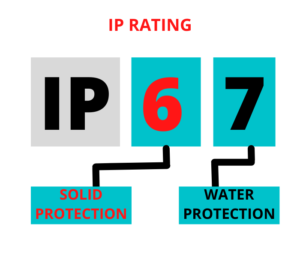Voltage drop is a phenomenon where the voltage in a circuit reduces as current flows through it. This can occur in both DC and AC circuits, and it can have several causes.
In this article, we will explore the reasons behind voltage drop and some ways to solve voltage drop problems.
Table of Contents
What Causes Voltage Drop in DC Circuits?
In DC circuits, voltage drop can occur due to several factors, including:
- Resistance: Every wire, cable, or component in a circuit has some resistance. As current flows through the circuit, it encounters this resistance, which reduces the voltage. The higher the resistance, the greater the voltage drop.
- Wire Size: When the wire is too small, it can’t handle the current flowing through it, and the wire heats up, causing a voltage drop. I’ve written a detailed article about How cable size affect voltage drop, read it for more information.
- Length of Wire: The longer the wire, the greater the resistance, and hence, the greater the voltage drop.
- Connection Quality: Poor connections between wires or components can cause a voltage drop as current struggles to flow through the circuit.
DC Voltage Drop Formula:
Ohm’s Law can be used to calculate the voltage drop in a DC circuit:
V = IR
Where V is the voltage drop, I is the current, and R is the resistance.
To calculate voltage drop in a DC circuit, we can use the following formula:
V = IR
where V is the voltage drop, I is the current flowing through the circuit, and R is the resistance of the circuit element causing the voltage drop.
I have a detailed article about Voltage Drop Calculations, Read it for more information.
Example of how to use this formula:
Suppose you have a 12-volt battery connected to a circuit with a resistor of 2 ohms. The current flowing through the circuit is 4 amps. You want to calculate the voltage drop across the resistor.
Using the formula V = IR, we can rearrange it to solve for V:
V = IR
V = 4 amps x 2 ohms
V = 8 volts
Therefore, the voltage drop across the resistor is 8 volts. This means that 4 amps of current flowing through a 2-ohm resistor will cause an 8-volt voltage drop across the resistor.
It’s important to note that the voltage drop can occur across any circuit element that has resistance, such as wires, switches, and other components.
The same formula can be used to calculate the voltage drop across any of these elements in a DC circuit.
How to Solve Voltage Drop Problems in DC Circuits?
There are several ways to solve voltage drop problems in DC circuits, including:
- Use Larger Wires: Using larger wires with lower resistance can reduce the voltage drop.
- Shorten Wire Lengths: Shortening the length of wires reduces resistance and thus reduces the voltage drop.
- Improve Connections: Ensuring proper connections between wires and components can reduce voltage drop.
- Increase the Voltage: Increasing the voltage supplied to the circuit can reduce the impact of voltage drop.
What Causes Voltage Drop in AC Circuits?
In AC circuits, voltage drop can occur due to the same factors as DC circuits, as well as some additional factors such as:
- Inductance: When AC current flows through a wire, it creates a magnetic field around the wire, which can induce voltage in the wire itself, causing a voltage drop.
- Capacitance: When two conductive surfaces are separated by an insulator, they form a capacitor, which can store charge and reduce the voltage in the circuit.
AC Voltage Drop Formula:
Calculating voltage drop in AC circuits is more complicated than DC circuits due to the presence of inductance and capacitance. One way to estimate voltage drop is to use the following formula:
V = IR + IX + IC
Where V is the voltage drop, I is the current, R is the resistance, X is the inductive reactance, and C is the capacitive reactance.
How to Solve Voltage Drop Problems in AC Circuits?
To solve voltage drop problems in AC circuits, the following techniques can be used:
- Increase Wire Size: Using larger wires with lower resistance and lower inductance can reduce the voltage drop. For more information about The effect of wire size on voltage drop read my article here.
- Reduce Wire Lengths: Shortening the length of wires reduces resistance and inductance, thus reducing voltage drop.
- Improve Connections: Ensuring proper connections between wires and components can reduce voltage drop.
- Use Power Factor Correction: Adding capacitors to the circuit can help offset the effect of inductive reactance and reduce voltage drop.
Voltage drop is a common issue in both DC and AC circuits. It can be caused by several factors such as resistance, wire size, length, and connection quality.
To solve voltage drop problems, one must identify the root cause and apply the appropriate technique such as using larger wires, shortening wire lengths, improving connections, increasing voltage, and adding capacitors.
what causes voltage drop in power supply?
Voltage drop in a power supply can be caused by several factors. In this article, we will explore the most common causes of voltage drop in power supplies in detail.
Input Voltage Variations
Power supplies are designed to operate within a specific input voltage range. If the input voltage varies beyond the specified range, it can cause voltage drop in the output.
For instance, if the input voltage is too low, the power supply may not be able to deliver the required output voltage, and the output voltage will drop.
This is common in situations where the power supply is located far from the source of power, and there is voltage drop in the wires due to resistance.
Overloading
Overloading is a situation where the load connected to the power supply draws more current than the power supply can deliver. This can cause voltage drop in the output.
For example, if the power supply is designed to deliver 5 amps, and the load connected to it draws 10 amps, the power supply will struggle to maintain the output voltage, and the voltage will drop.
Regulation
Power supplies are designed to regulate the output voltage, even when the input voltage or load changes.
However, power supply regulation is not perfect, and some voltage drop can occur. Voltage drop due to regulation is more common in low-cost power supplies that do not have sophisticated regulation circuits.
Poor Design
Poorly designed power supplies can suffer from voltage drop due to several reasons.
For example, the transformer used in the power supply may not be properly matched to the power supply circuit, resulting in a voltage drop.
Similarly, the capacitors used in the power supply may not be of good quality or properly sized, resulting in voltage drop.
Heat
Power supplies generate heat during operation, and if the heat is not dissipated properly, it can cause voltage drop in the output.
This is because high temperatures can cause electronic components to change their properties, resulting in a change in the output voltage.
Therefore, it is important to ensure that the power supply is properly cooled to prevent heat-related voltage drop.
Problems Caused by Voltage Drop
Dimming Lights
In an AC circuit, voltage drop can cause the lights to dim. This is because the voltage drop reduces the voltage at the light bulb terminals, resulting in lower light output.
Reduced Motor Performance
In a DC circuit, voltage drop can cause reduced performance of motors. This is because the motor may not receive enough voltage to generate the required torque, resulting in reduced speed and power.
Circuit Failure
In extreme cases, voltage drop can cause circuit failure. For example, if the voltage drop in a DC circuit is too high, it can cause the circuit to shut down or the electronic components to malfunction.
Increased Energy Costs
Voltage drop can also result in increased energy costs. This is because the power supply may need to draw more current to compensate for the voltage drop, resulting in higher energy consumption.
Overcoming Voltage Drop
Use Properly Sized Wires
Using wires that are properly sized for the load can help reduce voltage drop. This is because larger wires have lower resistance, which reduces the voltage drop.
Read my article Cable size calculations step by step.
Use High-Quality Connectors
Using high-quality connectors can also help reduce voltage drop. This is because low-quality connectors can have higher resistance, which increases the voltage drop.
Use Voltage Regulators
Using voltage regulators can help regulate the output voltage and reduce voltage drop. Voltage regulators are electronic components that adjust the voltage to a constant level, even when the input voltage or load changes.
Use Boost Converters
In DC circuits, boost converters can be used to increase the voltage and compensate for voltage drop.
Boost converters are electronic components that can increase the voltage by converting the input voltage to a higher voltage level.
Reduce the Load
Reducing the load connected to the power supply can also help reduce voltage drop. This is because a lower load draws less current, resulting in lower voltage drop.
In conclusion, voltage drop can cause several problems in both DC and AC circuits.
To overcome voltage drop, it is important to use properly sized wires, high-quality connectors, voltage regulators, boost converters, and reduce the load where possible.
Don’t Leave Empty-Handed!
Install my Free Android App on Google Play:
Electrical Cables Most Common Tables “Cables Tables”
And, my Electrical Calculations App “Fast Electrical Calculator”
Discover more great content by subscribing to My channel
Looking to stay ahead of the game in the world of electrical engineering? Subscribe to my YouTube channel and gain access to exclusive content you won’t find anywhere else!
The staff I recommend
(Amazon Affiliate Links to products I believe are high quality):
- Economy 120 Volt/60Hz AC Power Source – Step-Down Voltage & Frequency Converters 1800W
- UNI-T Digital Multimeter Tester UT139C
- 50-Amp Extension Cord for RV “100ft”
- Voltage Stabilizer 110/220v
- Hair Dryer “best selling“
- TOSHIBA EM131A5C-BS Countertop Microwave Ovens
Disclaimer: This contains affiliate links to Amazon products. I may earn a commission for purchases made through these links.


